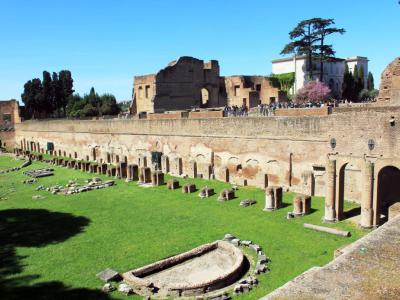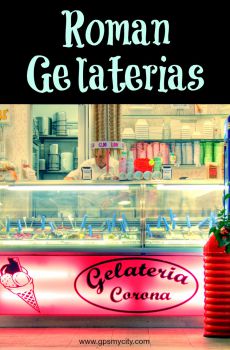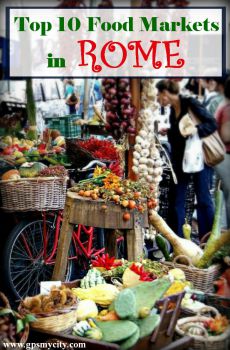
Palazzo di Domiziano (Palace of Domitian), Rome
The Palace of Domitian, constructed between 81 and 92 AD, served as the official residence of Roman Emperor Domitian and was subsequently used by other emperors. Perched atop the Palatine Hill in Rome, the palace remains a commanding presence, surrounded by other palatial structures.
The palace is a vast complex that can be divided into three main areas, which reflect the separation of public and private affairs to be conducted simultaneously. These areas are known today as the Domus Flavia, the Domus Augustana, and the garden or "stadium." The Domus Flavia represents the public wing of the palace, while the Domus Augustana is believed to have been the private wing.
The so-called "Hippodrome" or "Stadium" of Domitian, stretching across the entire eastern side of the Domus Augustana, measures 160 x 48 meters. While it resembles a Roman circus, it is too small to accommodate chariots. In reality, it was an elaborate sunken garden, and many of the statues found in the nearby Palatine Museum originate from this stadium. Some parts of the palace remain hidden beneath more recent structures.
The Palace of Domitian was just one of the architectural endeavors undertaken by the emperor. The palace itself was designed by the architect Rabirius and was built atop earlier structures, notably Nero's Domus Transitoria and the Republican House of the Griffins, both of which have yielded significant remains.
During the reign of Septimius Severus, a substantial extension was added to the southwestern slope of the hill, offering a view overlooking the Circus Maximus. However, the majority of the palace, as originally constructed under Domitian, remarkably survived intact throughout the remainder of the Roman Empire. It served as the official residence of the Roman Emperors until the Western Roman Empire's decline in the 5th century AD.
The palace is a vast complex that can be divided into three main areas, which reflect the separation of public and private affairs to be conducted simultaneously. These areas are known today as the Domus Flavia, the Domus Augustana, and the garden or "stadium." The Domus Flavia represents the public wing of the palace, while the Domus Augustana is believed to have been the private wing.
The so-called "Hippodrome" or "Stadium" of Domitian, stretching across the entire eastern side of the Domus Augustana, measures 160 x 48 meters. While it resembles a Roman circus, it is too small to accommodate chariots. In reality, it was an elaborate sunken garden, and many of the statues found in the nearby Palatine Museum originate from this stadium. Some parts of the palace remain hidden beneath more recent structures.
The Palace of Domitian was just one of the architectural endeavors undertaken by the emperor. The palace itself was designed by the architect Rabirius and was built atop earlier structures, notably Nero's Domus Transitoria and the Republican House of the Griffins, both of which have yielded significant remains.
During the reign of Septimius Severus, a substantial extension was added to the southwestern slope of the hill, offering a view overlooking the Circus Maximus. However, the majority of the palace, as originally constructed under Domitian, remarkably survived intact throughout the remainder of the Roman Empire. It served as the official residence of the Roman Emperors until the Western Roman Empire's decline in the 5th century AD.
Want to visit this sight? Check out these Self-Guided Walking Tours in Rome. Alternatively, you can download the mobile app "GPSmyCity: Walks in 1K+ Cities" from Apple App Store or Google Play Store. The app turns your mobile device to a personal tour guide and it works offline, so no data plan is needed when traveling abroad.
Palazzo di Domiziano (Palace of Domitian) on Map
Sight Name: Palazzo di Domiziano (Palace of Domitian)
Sight Location: Rome, Italy (See walking tours in Rome)
Sight Type: Attraction/Landmark
Guide(s) Containing This Sight:
Sight Location: Rome, Italy (See walking tours in Rome)
Sight Type: Attraction/Landmark
Guide(s) Containing This Sight:
Walking Tours in Rome, Italy
Create Your Own Walk in Rome
Creating your own self-guided walk in Rome is easy and fun. Choose the city attractions that you want to see and a walk route map will be created just for you. You can even set your hotel as the start point of the walk.
Fountains and Squares Walking Tour
In Rome there is a lively piazza round almost every corner, each with its own unique atmosphere and its own story to tell. These public squares have been the center of Roman culture for centuries, and some of the city’s most popular attractions are located within them.
Most piazzas have a fountain in the center and a lot of cafes around. In fact, Rome holds the largest number of fountains in... view more
Tour Duration: 2 Hour(s)
Travel Distance: 4.1 Km or 2.5 Miles
Most piazzas have a fountain in the center and a lot of cafes around. In fact, Rome holds the largest number of fountains in... view more
Tour Duration: 2 Hour(s)
Travel Distance: 4.1 Km or 2.5 Miles
EUR Sightseeing Walking Tour
The Esposizione Universale di Roma (EUR), located in the southern suburb of Rome, was originally constructed for an international exhibition that was planned by Mussolini as a grand celebration of Fascist Italy. However, due to the outbreak of World War II, the exhibition never took place. The architecture of EUR was designed to glorify Fascism and showcases a distinct style that sets it apart... view more
Tour Duration: 2 Hour(s)
Travel Distance: 3.6 Km or 2.2 Miles
Tour Duration: 2 Hour(s)
Travel Distance: 3.6 Km or 2.2 Miles
Vatican Walking Tour
Consisting of a walled enclave within the city of Rome, the Vatican is the world’s smallest sovereign state, as well as a symbol (and headquarters) of the Roman Catholic faith. Although only 44 hectares in surface, one is amazed by the vastness of this place and the sheer size of everything. When gazing around in all directions, you realize how much can be achieved by people working in faith for... view more
Tour Duration: 2 Hour(s)
Travel Distance: 3.4 Km or 2.1 Miles
Tour Duration: 2 Hour(s)
Travel Distance: 3.4 Km or 2.1 Miles
Food Tasting Walking Tour
Whether it’s a long lunch or a stop-off for an ice cream on an evening stroll, eating in Rome is a very social activity. Culinary traditions run deep here, and it may well be one of Italy’s most pleasurable cities in which to eat. Deli shops, prosciutterias, pizzerias, fornos (bakeries) and caffès are also very popular and offer a great alternative to a restaurant meal.
On this... view more
Tour Duration: 2 Hour(s)
Travel Distance: 2.7 Km or 1.7 Miles
On this... view more
Tour Duration: 2 Hour(s)
Travel Distance: 2.7 Km or 1.7 Miles
Roman Forum and Imperial Forums Walking Tour
t's a known fact that Rome wasn't built in a day. But since it was built, the city has stood the test of time and become "eternal." A popular proverb says, "all roads lead to Rome," but very few realize that, inside Rome itself, all roads lead to the Forum.
Indeed, the central hub of ancient Rome, the Roman Forum and the Imperial Forums once served as the... view more
Tour Duration: 3 Hour(s)
Travel Distance: 2.6 Km or 1.6 Miles
Indeed, the central hub of ancient Rome, the Roman Forum and the Imperial Forums once served as the... view more
Tour Duration: 3 Hour(s)
Travel Distance: 2.6 Km or 1.6 Miles
Holy Sites Walking Tour
As the cradle of the Catholic Church, one of the world's largest organizations, Rome has a large number of valuable, sacred places of worship. Crowded with architectural splendors from different periods of time, each of its churches and basilicas represent a significant part of culture and history.
Take this self-guided walking tour to discover Rome's magnificent religious heritage,... view more
Tour Duration: 3 Hour(s)
Travel Distance: 6.9 Km or 4.3 Miles
Take this self-guided walking tour to discover Rome's magnificent religious heritage,... view more
Tour Duration: 3 Hour(s)
Travel Distance: 6.9 Km or 4.3 Miles
Useful Travel Guides for Planning Your Trip
17 Best Gelaterias in Rome Italy
For ice cream lovers and dabblers this guide is a treasure chest of Rome’s best gelato shops. There are gelaterias everywhere. Many visitors to Rome only have a few days to explore the city. You owe it to yourself to make the most of your time and find the gelato locals eat. Often the authentic...
Souvenirs Shopping: 15 Authentic Italian Things To Buy in Rome
Rome is the Eternal City and, as such, the list of gift options available here is countless. Whether it's something edible, drinkable, wearable or pleasing to the eye that you want - you will find it all here in abundance. However, if time or budget is the factor, perhaps you might want to...
10 Best Food Markets in Rome Italy
Of all the things Italy is most famous for (cars, music, fashion, movies, etc.), food is, undoubtedly, top of the list. Rome may well not be the whole Italy, but no Italy is whole without Rome... And the Romans, much as all their fellow-Italians, like it "fresco", hence the abundance of...









